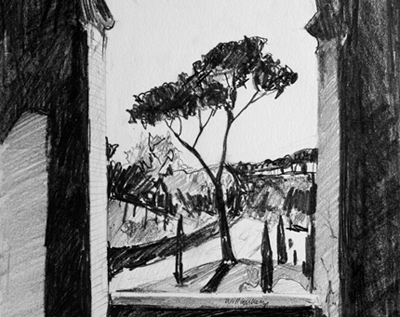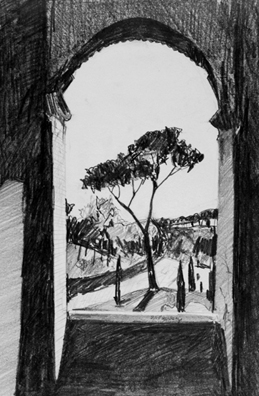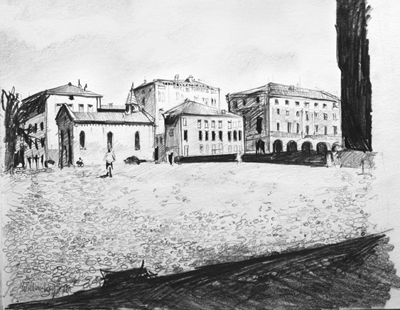Wny Drawing With a Normal Pencil Sukcs

Drawings by Will Kemp
Ever wanted to learn to draw?
Have you daydreamed of just picking up a pencil and sketching?
But inside there is a lingering doubt.
A distant memory of a school teacher who told you once you were bad at art.
An inner critic that holds you back…. Even before you begin.
But what if you could learn to draw?
What if the principles of drawing could help you to become more productive in other areas of your life.
Would you give it a try?
Feel the fear, and draw it anyway.
Productivity is often linked to a fear of failure, an obsession with thinking rather than doing. Of reading one more book or enrolling on one more course until you are 'ready'.
Learning to draw forces you to face your fears head on and takes you out of your comfort zone.
To draw something, anything, for the first time is scary.
You can feel very vulnerable when your work is out in the open for criticism especially before it is finished.
To get productive you have to push through these blocks, accept it is not going to be perfect and get to work.
A clear sign of procrastination is a blank page so put pencil to paper and the rewards can be fantastic.
To have the confidence to draw out your problems will help you solve them quicker, and to be able to record that view you admired so much on your holiday with a pencil rather than a camera will be priceless.
To be creative you actually have to do something. It involves putting your imagination to work to make something new, to come up with new solutions to problems, even to think of new problems or questions. You can think of creativity as applied imagination.
Ken Robinson, The Element: How Finding Your Passion Changes Everything
1. Embracing Mistakes
 For a beginner using an eraser is seen as a bad thing, for a professional, it it essential. Mistakes are going to happen every time. Drawing, as with painting is all about refining and adjusting as you progress.
For a beginner using an eraser is seen as a bad thing, for a professional, it it essential. Mistakes are going to happen every time. Drawing, as with painting is all about refining and adjusting as you progress.
A drawing is never correct the first time. You always have to alter what you first thought was 'correct'. Areas that you were convinced were perfect sometimes have to be completely repainted or scrapped.
Accepting that whatever you are working on won't initially be perfect is key to making things happen. Mistakes or "failures" act as a lighthouse guiding a ship into dock. Every tweak adjusts the rudder, giving you a direction in the vast ocean of ideas, initially they will be big adjustments but as you get closer to your destination they will be smaller and smaller.
The trick is to realize that these are all signs of improvement and not to get disheartened.
2. Talent Is Overrated
Beginners often think you need a natural talent for drawing. You don't.
Drawing is a skill that can be learnt.
Tiger Woods didn't just pick up a Golf club, swing and hit a hole in one. He practiced and practiced. Don't give up when your first drawings don't resemble what you imagined, just see them as a visual diary of your progress.
We often have an in built 'taste meter' when we know we can do better, we know our work looks crap, we're just not sure how to make it better!
This willingness to start something even when you know it won't be 100% is crucial in becoming more productive.
3. Create More, with Less
To be able to draw a subject accurately you need to fully concentrate, and because of this intense focus, your eyes get tired.
You need to have regular breaks to be able to see the objects correctly. I usually find about 90 minutes is my optimum painting time.
We're not designed to work for continuous lengths of time, it effects our ability to judge subtle differences and nuances. So work intensely, then make a brew and give your eyes a break.
You don't get more productive by working more hours, but working intensely in short, focused bursts.
4. The Minimalist Productive

How many new ideas did you have this morning? And how many new articles did you feel you 'had to read' before getting started?
Being overwhelmed by the number of options is often worse than no ideas at all.
So tomorrow morning try drawing out your options rather than making a list. The drawings don't have to be accurate, just a simple stickman will do, but by actually drawing out your issues it can be easier to visualise which direction makes sense.
It is a myth that multitasking makes you more productive. When you are drawing it forces you to focus on the now.
You can't check email and draw at the same time. So apply these principles to other areas of your work that you try to juggle.
5. Sketch First, Paint Later
Drawing can be extremely effective in working through large scale ideas. And when you start drawing or painting you soon begin to appreciate how a little planning can make a big difference.
The Old masters always made sketches before embarking on a large scale painting. Sculptors make Maquettes (small scale versions of the finished piece) before starting to chisel the marble.
Painting and drawing takes time. And you don't want to waste your time on a large scale piece if you haven't tested a few options first.
So think about ideas you are working on and try to work out how you can make a 'sketch' of the project. Maybe a novel could be a short story, a jewellery collection could start with just rings. Start small, but think big.
6. A Little and Often
To keep on top of drawing you need to keep a regular schedule, even 5 minutes a day will keep you focused.
This could be on your journey to work, in a lunch break, or in a really boring meeting!
Momentum is key.
The more regularly you draw, the easier it will become.
When I first started my Youtube channel my aim was to post one new video per week. To start with this didn't seem enough and I was itching to create more or publish more regularly but I forced myself to stick to the rules, one video a week, every week.
If I had decided to try to film one a day or every few days I would have definitely failed.
I'm now at 24 videos in 3 months and counting, this regular but small approach has helped to keep momentum and build the project – what's more it's become a habit.
7. Unlocking Your Creativity

Drawing is fantastic at engaging the right hand side of your brain, and if you're having a creative block, drawing can help to kickstart your mind. To draw accurately you have to fully engage with your right hemisphere of the brain, the left hand side which is more logical and analytical will always try to 'help' out by trying to recall memories of objects for you.
It makes assumptions about what it 'thinks' is in front of you rather than what actually is there. Learning to draw is actually more about learning to see and discovering a new visual language.
Professor Betty Edward's states in her book Drawing on the Artist Within:
You will also discover that this new language, when integrated with the language of verbal, analytic thought, may provide the ingredients essential not only for true creativity – that is, new or novel ideas, insights, inventions, or discoveries that have a social value – but also for useful creative solutions to the problems of everyday life.
So next time you find yourself trying to juggle too many things grab a pencil and paper and draw.
You may be surprised to discover the inner artist just waiting to be let out. And your new found productivity will give you the free time needed to indulge in your new creativity!
Over to you
Have you recently faced your fears and learnt a new skill that you'd being putting off for years?
Did you used to draw as a kid but have got out of the habit?
I'd love to hear your story.
About the Author Will Kemp can teach you how to draw. He is shortly starting a new online drawing course for absolute beginners.
Wny Drawing With a Normal Pencil Sukcs
Source: https://lateralaction.com/articles/learn-to-draw/
0 Response to "Wny Drawing With a Normal Pencil Sukcs"
Post a Comment